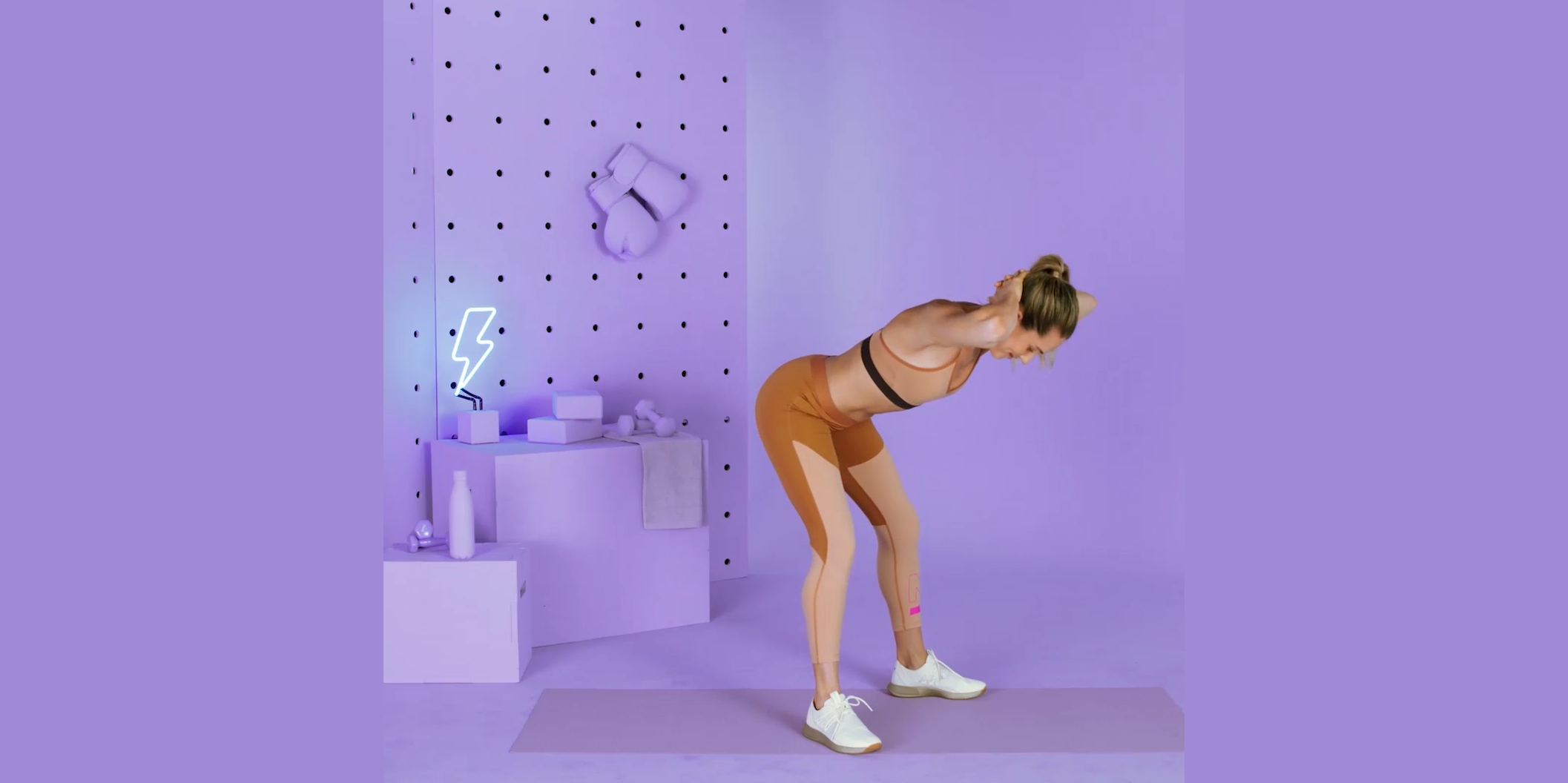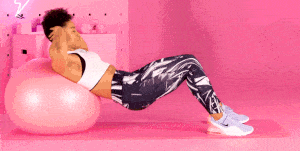Sure, donkey kicks are aptly named since they mimic the animal’s movement—but they also build a great, well, you get the picture. “When performed correctly, this exercise does an excellent job of isolating the biggest and bulkiest glutes muscle—the gluteus maximus,” says Keaton Ray, CSCS, trainer and co-founder of MovementX physical therapy in Portland, Oregon.
In other words: There’s a lot to gain—but only if you can get your form dialed in.
How To Do A Donkey Kick
How to: Get on all fours, with your hands stacked directly under shoulders, and knees under hips. Make sure your back is flat (think: balancing a cup of coffee on your lower back), and tuck your chin slightly so the back of your neck is facing the ceiling. Without rounding your spine, engage your lower abdominals. Keeping the 90-degree bend in your right knee, slowly lift your leg straight back and up toward the ceiling. Your max height is right before your back starts to arch, or your hips begin to rotate. Return to the starting position. Repeat all reps on one side, then switch legs.(Watch Instagram-famous trainer Anna Victoria demo the move above.)
Reps/sets for best results: Aim for two sets of 15 to 20 reps.
Donkey kicks target your glutes, core, and shoulders.
Form tips: Don’t let your lower back arch as your leg lifts, says Ray. This causes you to rely on your back instead of your glutes, which compresses your spine and neglects the muscles you’re aiming for here.
Also, be sure your hips stay level—when your IT band or hip flexors are too tight, your body will compensate by rotating your hips as you lift, Ray says. How to control it: Only lift as high as your hips can stay level (a mirror can help monitor this).
Benefits Of Donkey Kicks
Donkey kicks are great for both stability and toning, Ray says. They target your gluteus maximus—the largest of your three glutes muscles, and the bulk of your booty. They also work your core and shoulder muscles, since your entire body has to remain stable while your leg lifts.
This exercise is especially beneficial for anyone who has a desk job. “It helps stretch the hip in the opposite direction that we hold it when we sit,” Ray says, plus the movement counteracts those sedentary hours in a chair. “Both of these things will help to improve posture and prevent hip and spine injuries.”
Make Donkey Kicks Part Of Your Workout
Ray advises incorporating glute-strengthening moves, like the donkey kick, five times per week—whether it’s at the gym or not.


When you’re at the gym, donkey kicks are super-versatile. Because they’re a low-weight move and don’t max out your muscle capacity, they can be a great warmup or part of an active recovery day. If you include them in a leg and butt workout, pair the kicks with butt moves that target the other two glutes muscles—side-lying leg lifts, clamshells, band walks, or single-leg bridges.
If you don’t feel the burn from two sets of 20 reps, add resistance: Try ankle weights, a dumbbell nestled in your knee crease, or a resistance band looped around your lifted foot.
5 Donkey Kick Variations To Turn Things Up A Notch
Although donkey kicks are super-effective on their own, you can add some oomph to the movement with extra resistance or experimenting with new planes of motion, says Roxie Jones, a NASM-certified trainer, former SoulCycle Instructor, and Talent Hack ambassador. And, just like the OG version, the variations from Jones below are designed to torch your gluteus maximus, all while strengthening your core, back, and shoulders.
Reminder: Make sure you’ve mastered the original donkey kick before moving on to these more advanced versions.
1. Smith Machine Donkey Kicks
What’s different: Grow some serious glutes by adding weight to a traditional donkey kick.
How to: Position yourself underneath a Smith machine on all fours so that the arch of your right foot is nestled beneath the bar and your right knee forms a 90-degree angle. You should be roughly one to two feet in front of the machine itself with the bar in line with your body. Using your glutes and hamstrings to initiate the movement, keeping your core engaged, push the bar through and up from the bottom of your foot. Stop once you feel the urge to rotate your hips or arch your back, pause, then slowly return to your starting position. That’s one rep.
Reps/sets for best results: Aim for three to four sets of eight to 12 reps on each leg, depending on how much weight you use.
Form tips:Finding the right starting position may take some adjusting. Just make sure your bent knee forms a 90-degree angle when you begin.
2. Standing Single-Leg Cable Donkey Kicks
What’s different: Tired of glute workouts on all fours? This standing donkey kick variation provides a fresh angle—without putting pressure on your knees and wrists.
How to: Position yourself roughly 12 inches away from a cable machine with an ankle strap positioned at the bottom and secured to your right foot. With your hips facing forward and your hips and right knee slightly bent, grasp the machine in front of you for balance as you use your glutes and hamstrings to kick your leg directly behind you. Move your leg far enough so that you feel a burn, but not so far that your hips are forced to open your hips out to the side. Pause for a count, release, then slowly lower the leg back to your starting position.
Reps/sets for best results: Aim for three to four sets of 12 to 15 reps on each leg.
Form tips: Try to keep your hips facing forward through the move. And don’t be afraid to go low on the weight until you’ve fully mastered the motion.
3. Resistance Band Donkey Kicks
What’s different: A slight variation of the classic, a looped resistance band creates tension (and extra resistance that you can control).
How to: Assume the starting donkey kick position on all fours. Secure a looped resistance band around your right palm and right foot. Maintaining tension through the band, lift your right leg through and up at a 90-degree angle, pushing through behind you with your heels. Stop once you feel the urge to arch your back or rotate your hips. Pause for a single count then lower back to your starting position.
Reps/sets for best results: Aim for three to four sets of 12 to 15 reps on each leg.
Form tips: Hold the band closer inward, leaving the opposite end free, for extra resistance.
4. Sideways Donkey Kicks
What’s different: Although this move hits the gluteus maximus first and foremost, your quads, hamstrings, and tensor fasciae latae (the muscle running near the top front of your hip) receive some activation, too.
How to: Assume the starting donkey kick position on all fours. Keeping right knee bent at a 90-degree angle, lift right leg out to the side. Stop when the right knee is at, or just below, parallel to the floor. Squeeze for a single count, then lower to the ground and return to starting position. That’s one rep.
Reps/sets for best results: Aim for three to four sets of 12 to 15 reps on each leg.
Form tips: Try to keep your torso parallel to the ground—and as still as possible—as you lift the leg.
5. Standing (Or Leaning Forward) Machine Donkey Kicks
What’s different: This variation uses a machine to assist with the movement and allow for heavier loads. Jones notes that most major gyms will carry either a type positioned with you standing or (semi) on all fours. (Don’t worry, you’ll get a similar burn from both!)
How to: Stand or kneel (depending on which type of machine it is). If leaning forward, position your knees on the pads or, if standing, your hips on the pads in front of you. Hold onto the handles to stabilize yourself, keeping your core tight. Place your right foot on the plate behind you with your left leg and left foot fixed on the ground. Using your glutes and hamstrings to activate the motion, push the plate directly behind you, pausing for a count at the top of the motion. Return the right leg back to starting position. That’s one rep.
Reps/sets for best results: Aim for three to four sets of eight to 12 reps, depending on how much weight you use.
Form tips: As all machines are built somewhat different, so don’t hesitate to reach out to a staff member if you’re unsure your form is correct.
Source: Read Full Article

